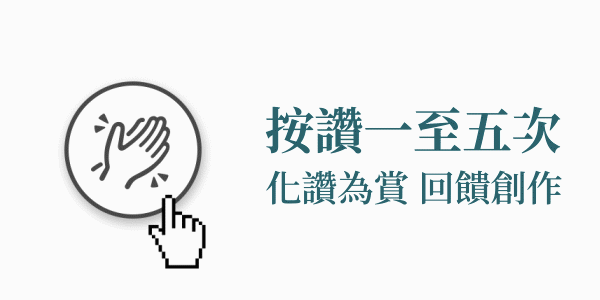犧牲資安換取便利?法制不全政府擴權?台灣「數位晶片身分證」發行緊急喊卡,資安和法律的質疑聲浪再掀高峰。目前時下討論文章多以歐洲國家為主,OCF 特此訪問日本、韓國、馬來西亞、新加坡,用較貼近台灣的亞洲 4 鄰國作為前車之鑑,洞悉 eID 各層面疑慮!
亦提供以上三篇文章的英文翻譯版本,歡迎分享給使用英文的朋友閱覽。

本文將接續《亞洲國家數位身份證的使用概況》的上篇,介紹「非強制性推廣智慧裝置數位身分證」的南韓、新加坡,以及尚在轉型階段的台灣現況,並彙整訪談國家之資訊,談台灣的數位辨識發展可借鑑他國先例之處。
作者/採訪者:張苓蕾;編輯:OCF Lab

去五十年來,資訊科技日新月異已將我們推向數位人生,許多國家選擇與時並進,一一加入數位化的行列,亞洲各國也不例外。近年來數位身份證 (eID) 席捲全球,有了數位身份證,人們再也不必在凌亂的皮包裡翻找各種證件,只須一張卡片就能讀取重要的個人資訊,但這樣的便利其實伴隨著個人資料外洩的資安疑慮。面對數位身份證,有些國家選擇強制推行,讓使用普及度提高,更好施展相關政策與規劃;有些國家讓民眾保有選擇權,放緩國家數位化的速度,使國人有足夠時間適應這種新的生活模式。
※關於 MyKad 駕照相關敘述,於 2021/1/12 更正內容。
作者/採訪者:張苓蕾;編輯:OCF Lab

本文將探討數位身份證在亞洲五個國家的推動與發展,依照不同推行機制,(上)篇文章介紹「非強制推廣數位身份」的日本與「強制推廣數位身分證」的馬來西亞;(下)篇文章則介紹「非強制性推廣智慧裝置數位身分證」的南韓、新加坡,以及尚在轉型階段的台灣現況,以帶讀者一覽數位身份證在亞洲的使用情況。
不過是加個晶片,明明更方便,為何這麼多專家學者急跳腳?本文作為〈追擊 eID〉系列的首篇,將簡潔地介紹「數位晶片身分證」與其相關政策缺失帶來的 4 項疑慮,以及可避免個資外洩甚至國安問題的 3 點建議。
作者:何明諠;編輯:OCF Lab

台灣自 2015 年起再次啟動全面換發數位身分證的計畫,這是政府在 1998 年及 2005 年後,第三次正式啟動與數位身分的計畫。
本次製作數位身分證的政策自 2015 年發起至今歷經了多次修正。目前最新的計畫,是政府預計將現有的身分證結合自然人憑證,製作成新式數位晶片身分證,並預計於 2021年 1 月於澎湖縣、新竹市、新北市板橋區及永和區試辦, 2021 年 7 月開始全面換發(此文撰於 2020/11,12 月時四區已退出試辦,且換發暫緩)。
Written by Lynette Chang | Edited by OCF Lab
Following the release of previous part, this article will look at the non-mandatory implementation of digital and mobile ID via smart devices in Singapore and South Korea, as well as the transition to the use of eIDs in Taiwan. By comparing and contrasting the digital ID experiences in these Asian countries, we hope to identify areas that Taiwan can learn from to improve its digital ID experience when it is rolled out next year.
Singapore’s National Digital Identity Initiative has seen the launching of the Singapore Personal Access (SingPass) Mobile application in 2018. The SingPass Mobile app, which users may access via a 6-digit passcode or biometrically through fingerprint or facial recognition, is a one-stop portal that allows users to access various government services such as MyTax, Singapore’s online tax portal.
Written by Lynette Chang | Edited by OCF Lab
Following the release of previous article in Taiwan, this one will have a look at the non-mandatory digital ID in Japan, and mandatory myKad in Malaysia.
※ About the description of MyKad and driver’s license, the content had been corrected on January 12, 2021.
All residents in Japan including foreign nationals are issued a unique 12-digit Social Security and Tax Number affectionately known as ‘My Number’. Residents may request for a physical My Number Card to access various online administrative services, such as Japan’s online tax portal e-Tax. The card contains photo identification and an IC chip for online identification.
Written by Ho Ming-hsuan | Edited by OCF Lab
The digital revolution in the last half-decade has made digital life a new norm, and many countries are joining a growing number of people in transitioning into a ‘walletless’ future. First there was contactless payment, which allows users to pay through their mobile devices. Now, electronic and digital forms of identification are taking the world by storm. Gone are the days where we had to fumble through card after card to finally reach for the right one. Now, all our essential information is available at our fingertips with just a single card or smart device in hand.
此篇文章為翻譯文,原文為 CocoNet (東南亞數位人權營隊) 團隊所撰寫的:Digital Hygiene 101: How to practice digital safety and security (原文授權條款 CC BY 4.0),因此,本翻譯文中所謂的"我們",是指 CocoNet 主辦團隊 – EngageMedia。
原文作者:Darika Bamrungchok (EngageMedia)
翻譯者:開放文化基金會 | 潤稿:2019 CocoNet 臺灣參與者

COVID-19 全球大流行不再只是全球公衛危機,它已全面影響人類社會各個層面。我們還不知道這個危機要多久才會落幕,但我們可以肯定,在未來人們工作、旅行、學習與互動的模式,都將因此而改變。
每天,我們會聽到很多關於如何維持身體健康的提醒,然而在個人自身健康之外,你有想過你的數位健康嗎?這場全球瘟疫強迫著人們史無前例的在日常生活中大量使用新科技,關注數位裝置的健康,將是自身健康的重要延伸。
日常中,我們總是被提醒要常洗手、每次洗手 20 秒,而個人使用裝置和軟體是否「乾淨」和安全,也應要時常注意。可以抵禦不斷更新、進化之數位威脅的第一道防線,就是數位保健,那些威脅包括惡意郵件、社交工程、網路釣魚、網路霸凌、帳戶和裝置被駭、盜取個人資訊、或是更糟的手段。事實上,大部分資料被駭和外洩都源自於人為錯誤,隨著 COVID-19 的蔓延,全球網路攻擊也正在增加,例如惡意程式偽裝成冠狀病毒地圖。
在這篇文章裡,我們將帶大家演練一遍,了解如何在數位病毒中保持安全和健康,另外,也會針對大家日常線上工作中會使用到的工具,提供一份列表,列出較安全的工具選單。